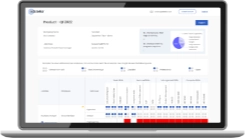
Sarah noticed something odd. Her team's productivity metrics were perfect: 8 hours logged, tasks marked complete, status always 'active.' But their actual output? Declining. Then she discovered the mouse jiggler app on three computers…
This scenario is playing out in offices and remote workspaces across the globe. What started as a reasonable response to remote work challenges has evolved into something far more problematic: a culture of surveillance that's actually undermining the very productivity it was meant to protect.
The shift from casual office observation to comprehensive digital surveillance represents one of the most significant changes in workplace dynamics of our time. Managers who once relied on informal check-ins and visual cues now have access to keystroke logs, screen captures, and AI-powered productivity scores. Yet paradoxically, many are finding that more monitoring leads to less real work getting done.
The reality is that trust beats tracking every time. Companies that have learned to build accountability without surveillance are not only seeing better results, but they're also winning the talent war. This guide will show you exactly how to make that transition, moving from a culture of watching to a culture of winning together.
The New Reality of Workplace Monitoring
Today's workplace monitoring landscape extends far beyond the simple time clocks of previous generations. Modern employee surveillance has become sophisticated, comprehensive, and in many cases, intrusive. Understanding what's currently happening in workplaces is crucial for leaders who want to make informed decisions about their monitoring policies.
Current Monitoring Landscape
- Activity Trackers: These systems monitor keystroke frequency, mouse movements, and application usage. Some can detect "idle" time down to the second and send alerts when activity drops below predetermined thresholds. Advanced versions use machine learning to distinguish between "productive" and "unproductive" applications.
- Time Trackers: Beyond simple clock-in systems, modern time tracking includes random screenshot captures, webcam monitoring, and detailed breakdowns of how every minute is spent. Some systems rate productivity based on the applications used and websites visited.
- Communication Monitors: AI-powered tools now analyze email tone, Slack message frequency, and even video call participation. Some systems flag "concerning" language patterns or reduced communication frequency as potential performance issues.
- Location Tracking: For in-office workers, badge swipes track movement patterns. For remote workers, GPS monitoring and Wi-Fi network analysis can verify work locations. Some companies track how long employees spend away from their designated workspace.
- Productivity Scoring: AI-driven systems compile all monitoring data into productivity scores, ranking employees and flagging those who fall below company averages. These scores often influence performance reviews and promotion decisions.
Visual showing progression from basic time tracking to comprehensive surveillance
Why Companies Monitor
The reasons behind implementing monitoring systems often seem logical from a business perspective:
- Remote Work Accountability: With distributed teams, managers struggle to gauge productivity without visual cues. Monitoring provides data to replace in-person observation.
- Compliance Requirements: Industries like finance and healthcare must track certain activities for regulatory compliance, making some level of monitoring unavoidable.
- Data Security Concerns: Monitoring helps prevent data breaches by tracking file access and detecting unusual activity patterns that might indicate security threats.
- Productivity Optimization: Companies use monitoring data to identify bottlenecks, optimize workflows, and justify resource allocation decisions.
- Cost Justification: Detailed productivity metrics help justify remote work policies to stakeholders and demonstrate return on investment for employee costs.
The Hidden Cost of Constant Surveillance
While monitoring software promises increased productivity and accountability, the reality on the ground tells a different story. The psychological and practical impacts of constant surveillance create costs that often far outweigh any benefits. Let's examine what actually happens when employees feel constantly watched.
5 Immediate Impacts
- Productivity Theater: 43% admit to "fake busy" activities - Employees spend time appearing productive rather than being productive. This includes unnecessary email checking, keeping multiple applications open, and engaging in low-value tasks that register as "active" time.
- Trust Erosion: When employees feel distrusted, they reciprocate with disengagement. The psychological contract between employer and employee fundamentally changes from collaboration to compliance.
- Innovation Death: Surveillance systems typically can't measure creative thinking, problem-solving, or strategic planning. Employees avoid these immeasurable but valuable activities in favor of trackable tasks.
- Talent Flight: In a Zety survey on workplace surveillance, 71% of employees said they would leave an employer who uses excessive monitoring. The more you lean on Bossware, the more your best people start planning their exit.
- Mental Health Impact: Constant monitoring creates chronic stress and fear of punishment. In one survey, 81% of employees with 1–2 years of experience said they are afraid of being fired because of workplace surveillance. That kind of ambient anxiety drives burnout, erodes well-being, and ultimately drags performance down across the board.
Real Employee Reactions
The underground economy of surveillance avoidance reveals just how counterproductive monitoring can be:
- Mouse Jigglers and Productivity Hacks: Hardware and software solutions that simulate activity have become increasingly popular. Employees invest time and energy in gaming the system rather than doing actual work.
- "Green Status" Obsession: Workers become fixated on maintaining active status indicators, leading to inefficient work patterns and constant anxiety about appearing busy rather than being effective.
- Bathroom Break Anxiety: In surveillance-heavy environments, employees worry that short breaks will show up as “unproductive” time in monitoring dashboards. The result? People delay or skip basic needs, which is terrible for well-being and hardly a recipe for high performance.
- After-Hours Guilt: High-performing employees who finish their work efficiently still feel guilty about shorter work sessions, so they stay online longer than necessary just to satisfy monitoring dashboards.
The Psychology Behind the Problem
Understanding why monitoring backfires requires examining the fundamental psychological principles that govern human motivation and performance. The disconnect between monitoring intentions and results isn't just a management problem; it's a human nature problem.
Key Psychological Principles
- Autonomy Need: Humans have an innate psychological need for autonomy, the feeling that their actions are self-directed rather than controlled by external forces. Monitoring systems directly threaten this need, triggering resistance and decreased motivation even when the work itself is enjoyable.
- Intrinsic Motivation: Research consistently shows that intrinsic motivation (doing something because it's inherently satisfying) produces better results than extrinsic motivation (doing something for external rewards or to avoid punishment). Surveillance systems shift the focus from internal satisfaction to external compliance, killing intrinsic motivation.
- Psychological Safety: High-performing teams require psychological safety, the belief that one can speak up, make mistakes, and take risks without fear of punishment. Constant monitoring creates the opposite environment, where every action is scrutinized and judged.
- Trust Reciprocity: Trust is reciprocal by nature. When organizations demonstrate distrust through surveillance, employees respond with distrust of their own. This creates a downward spiral where increasing monitoring leads to decreasing trustworthiness.
The Monitoring Paradox
The monitoring paradox reveals itself in several counterintuitive ways:
- More Tracking = Less Actual Productivity: Time spent managing and responding to monitoring systems reduces time available for actual work
- More Metrics = Less Meaningful Work: Focus shifts to measurable activities at the expense of important but unmeasurable contributions
- More Surveillance = Less Loyalty: Employees become transactional in their relationship with the organization
- More Control = Less Innovation: Risk-taking and creative problem-solving decrease when every action is monitored
The fundamental issue is that monitoring systems measure activity, not effectiveness. They can tell you how long someone was at their computer, but not whether they solved a critical problem during that time. This measurement bias creates perverse incentives that actually reduce the behaviors organizations most want to encourage.
What Leaders Should Do Instead
The alternative to surveillance isn't chaos; it's a more sophisticated approach to leadership that builds accountability through trust, clarity, and connection. Here are four proven strategies that create better results than monitoring ever could.
1. Shift from Activity to Outcomes
The most fundamental shift leaders can make is moving from measuring inputs (hours, keystrokes, meetings attended) to measuring outputs (results delivered, problems solved, value created).
Direct Actions:
- Define Clear Deliverables, not Hours: Replace time-based expectations with specific, measurable outcomes that can be achieved in whatever time frame works best for each individual
- Measure Impact, not Input: Focus on customer satisfaction, revenue generated, problems solved, and other business-relevant metrics rather than activity metrics
- Weekly Goals Over Daily Tracking: Set clear weekly objectives and let employees manage their daily schedules to achieve them
- Results-Only Work Environment (ROWE): Implement policies where employees are evaluated solely on results, with complete autonomy over when and how work gets done
Example: Microsoft Japan's four-day workweek experiment increased productivity by 40% because the focus shifted from time spent to value delivered. Employees became more efficient and creative when freed from time-based constraints.
This approach requires more sophisticated management skills but produces dramatically better results. Managers must learn to set clear expectations, provide necessary resources, and evaluate based on business impact rather than activity levels.
2. Build Trust Through Transparency
Trust isn't built through surveillance; it's built through transparency, open communication, and mutual respect. Leaders must model the trust they want to receive.
Direct Actions:
- Explain any Monitoring that IS Necessary: When legal or security requirements mandate certain tracking, explain why it's needed, how the data is used, and what protections are in place
- Share Data with Employees: If you're tracking anything, make sure employees can see their own data and understand how it's interpreted
- Let Teams Set their Own Metrics: Involve employees in defining what success looks like and how it should be measured
- Regular Trust Audits: Survey employees about their trust levels and act on feedback to improve policies and practices
Transparency also means sharing context about business challenges, goals, and decision-making processes. When employees understand the bigger picture, they're more likely to make decisions that align with organizational objectives without needing external monitoring to guide their behavior.
3. Focus on Connection, Not Control
The antidote to surveillance is connection. Regular, meaningful interaction between managers and team members creates accountability through relationships rather than through tracking systems.
Direct Actions:
- Daily Check-ins (not check-ups): Brief conversations focused on support and obstacle removal rather than status reporting
- Virtual Coffee Chats: Informal conversations that build personal connections and understanding
- Team Rituals and Celebrations: Regular practices that reinforce shared values and collective achievements
- Manager Availability Hours: Dedicated time when team members know they can access support and guidance
Connection-based management requires emotional intelligence and a genuine interest in team member success. It's more demanding than monitoring-based management but creates stronger teams, better results, and higher retention. The key is shifting from "How can I watch them?" to "How can I support them?"
4. Invest in Leadership Development
Managing without surveillance requires more sophisticated leadership skills. Organizations must invest in developing managers who can lead through influence, coaching, and relationship-building rather than control and monitoring.
Critical Skills for Trust-Based Leadership:
- Emotional Intelligence: Understanding and responding to team member emotions, motivations, and needs
- Async Communication: Leading effectively across time zones and schedules without constant oversight
- Coaching & Mentoring: Helping team members solve problems and develop skills rather than directing every action
- Performance Dialogues: Having meaningful conversations about results, goals, and development rather than relying on metrics
- Cultural Intelligence: Building inclusive teams where diverse working styles and approaches are valued
This investment pays dividends through improved retention, higher performance, and stronger organizational culture. Leaders who can manage through trust and connection create competitive advantages that monitoring-based organizations simply cannot match.
Creating Policies That Balance Both
The goal isn't to eliminate all forms of tracking; it's to create policies that meet legitimate business needs while preserving trust and autonomy. Smart organizations develop monitoring frameworks that are minimal, transparent, and human-centered.
The Smart Monitoring Framework
- Minimal Viable Monitoring: Track only what's absolutely necessary for legal compliance, security, or essential business functions. Every monitoring element should have a clear, defensible business purpose.
- Transparent Policies: Employees should know exactly what is monitored, why it's monitored, how the data is used, who has access to it, and how long it's retained. No hidden tracking or surprise surveillance.
- Opt-in Options: Whenever possible, make productivity tools voluntary. Some employees actually prefer certain types of tracking for their own productivity management, so let them choose.
- Human Override: Managers should have the authority to adjust monitoring requirements based on individual circumstances, performance history, and role requirements.
- Regular Reviews: Monitoring policies should be reviewed quarterly to ensure they're still necessary and effective. Sunset clauses can automatically eliminate monitoring that's no longer needed.
Policy Examples That Work
- "Core Collaboration Hours": Instead of tracking all hours, require 4 hours of overlap with team members for meetings and collaboration, with full autonomy over the remaining schedule.
- "Output Agreements": Individual agreements that specify deliverables and deadlines without prescribing how or when the work gets done.
- "Trust but Verify" Spot Checks: Occasional, random quality reviews instead of continuous monitoring, like safety inspections rather than constant surveillance.
- "Self-Reported Productivity": Employees track and report their own productivity metrics, fostering self-awareness and accountability.
Quick Wins for Leaders
Transitioning from surveillance to trust doesn't have to be an overwhelming transformation. Leaders can start with small, immediate changes that begin building trust while maintaining accountability. Here's a practical roadmap for getting started.
Week 1 Actions
- Survey Team About Monitoring Concerns: Send a brief, anonymous survey asking how current monitoring affects their work and well-being
- Remove One Unnecessary Tracking Tool: Identify the monitoring element that provides the least value and eliminate it immediately as a trust-building gesture
- Start "No-Surveillance Fridays": Designate one day per week where non-essential monitoring is paused to see how it affects productivity
- Share Your Own Calendar/Work Patterns: Model transparency by showing your team how you structure your work time
Month 1 Goals
- Shift 2 Metrics From Activity to Outcome: Replace two activity-based measurements with result-based ones
- Implement Weekly 1-on-1s Focused on Support: Regular conversations about obstacles, resources needed, and goal progress
- Create a Team Charter on Accountability: Collaborate with your team to define what accountability looks like without surveillance
- Celebrate Results, Not Hours: Publicly recognize achievements based on impact rather than time invested
The Future of Work
The companies that will thrive in the future of work are those betting on trust over surveillance. As talent becomes increasingly mobile and competitive, organizations that create cultures of autonomy and trust will attract and retain the best people while achieving superior results.
The Choice Ahea
- High-Surveillance Workplace = Compliance Culture: Employees do the minimum required to satisfy monitoring systems. Innovation is limited, engagement is low, and the best talent leaves for better opportunities.
- High-Trust Workplace = Commitment Culture: Employees are internally motivated to deliver excellent results. Innovation flourishes, engagement is high, and top talent stays and refers others.
The future belongs to organizations that can build accountability without surveillance, create productivity without pressure, and achieve results through relationships rather than control. This isn't just about being a "nice" employer, it's about being a competitive one.
Your Next Steps
- Audit Current Monitoring Practices: List everything you're currently tracking and evaluate whether each element truly serves your goals
- Survey Employee Sentiment: Understand how your team feels about current policies and what changes would improve their experience
- Start Reducing Surveillance Incrementally: Begin with small changes that build trust while maintaining necessary oversight
- Invest in Leadership Development: Equip your managers with the skills needed to lead through trust and connection
Ready to transform your leadership approach? Edstellar's comprehensive leadership programs help managers build high-performing teams through trust, not surveillance. Develop the skills your leaders need to succeed in the future of work. Contact us to learn more about creating a culture of accountability without surveillance.
The choice is clear: continue down the path of increasing surveillance and watch trust erode, or build the leadership capabilities needed to create truly high-performing, engaged teams. The organizations that make the right choice now will have a significant competitive advantage in attracting talent, driving innovation, and achieving sustainable success.
The future of work isn't about watching employees more closely, it's about trusting them more deeply while providing the support and clarity they need to do their best work. Leaders who understand this will build the organizations that define the next era of business success.
Frequently Asked Questions
Explore High-impact instructor-led training for your teams.
#On-site #Virtual #GroupTraining #Customized

Bridge the Gap Between Learning & Performance
Turn Your Training Programs Into Revenue Drivers.
Schedule a ConsultationEdstellar Training Catalog
Explore 2000+ industry ready instructor-led training programs.

Coaching that Unlocks Potential
Create dynamic leaders and cohesive teams. Learn more now!


Want to evaluate your team’s skill gaps?
Do a quick Skill gap analysis with Edstellar’s Free Skill Matrix tool

Transform Your L&D Strategy Today
Unlock premium resources, tools, and frameworks designed for HR and learning professionals. Our L&D Hub gives you everything needed to elevate your organization's training approach.
Access L&D Hub Resources.svg)
.svg)



.svg)



.svg)
.svg)
.svg)
.svg)

